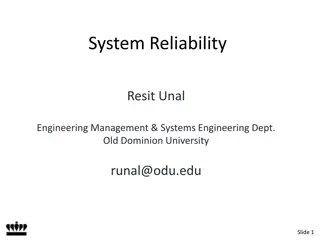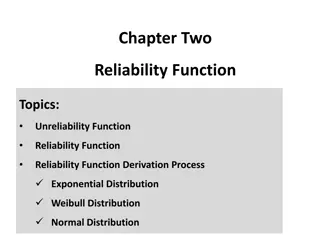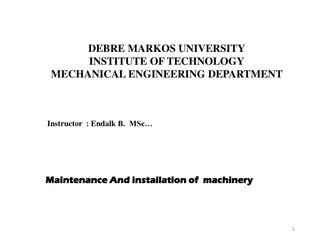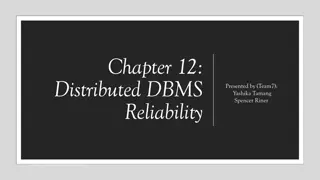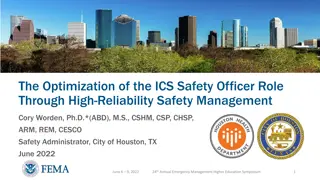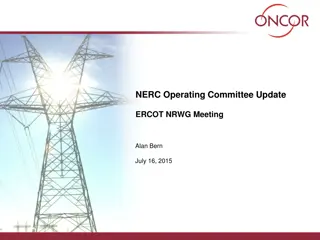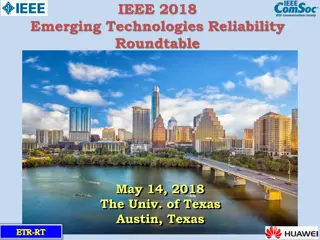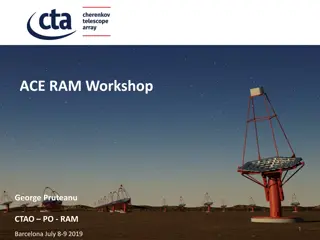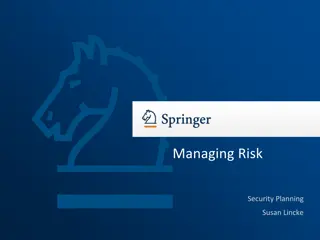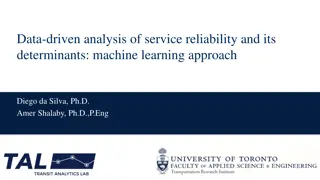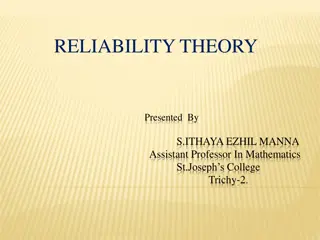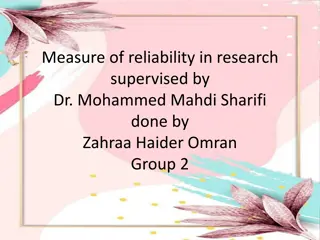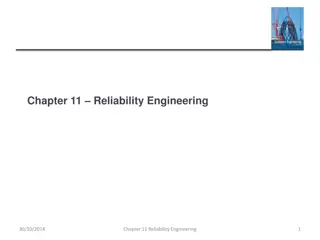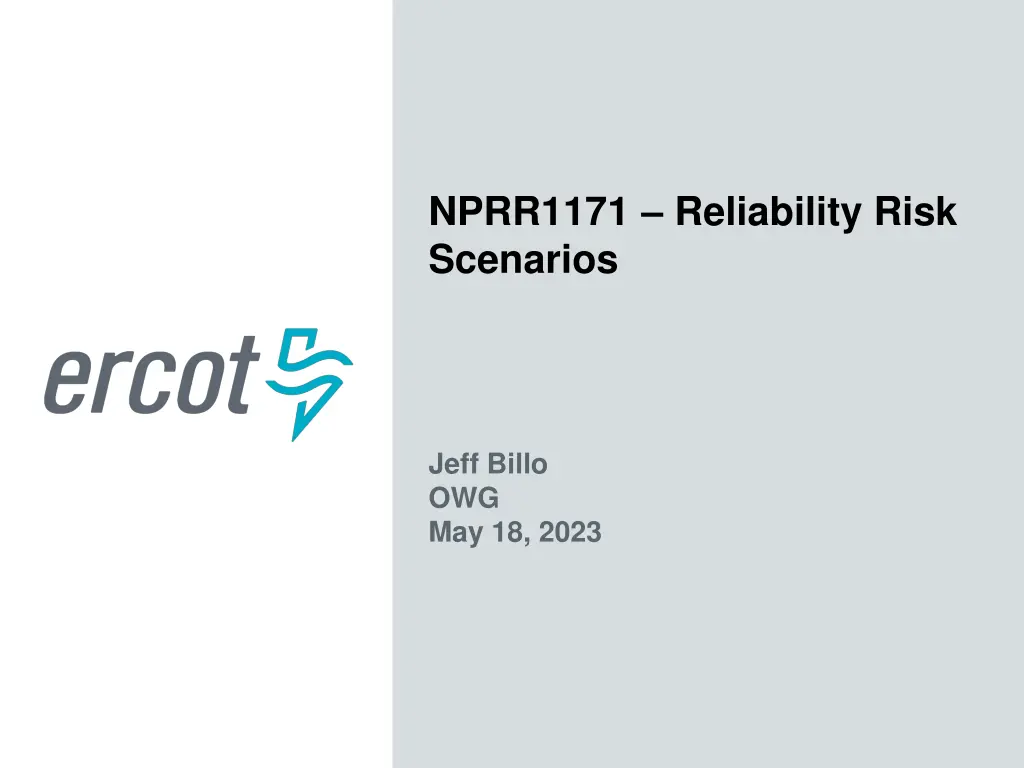
Understanding Reliability Risk Scenarios in Electric Grid Operations
Explore the risks associated with ancillary service products like Non-Spin Reserve Service, Responsive Reserve Service, and Regulation Service in the context of distribution system circuits being disconnected from the ERCOT system. Learn how these scenarios impact energy provision and reliability during critical events like load shedding and sudden system events.
Download Presentation

Please find below an Image/Link to download the presentation.
The content on the website is provided AS IS for your information and personal use only. It may not be sold, licensed, or shared on other websites without obtaining consent from the author. If you encounter any issues during the download, it is possible that the publisher has removed the file from their server.
You are allowed to download the files provided on this website for personal or commercial use, subject to the condition that they are used lawfully. All files are the property of their respective owners.
The content on the website is provided AS IS for your information and personal use only. It may not be sold, licensed, or shared on other websites without obtaining consent from the author.
E N D
Presentation Transcript
NPRR1171 Reliability Risk Scenarios Jeff Billo OWG May 18, 2023
Background Ancillary Service Products Non-Spin Reserve Service (NSRS) Capacity that can be started in 30 minutes to cover forecast errors, forced outages or ramps and replace deployed reserves until additional resources can be committed. Responsive Reserve Service (RRS) Reserved capacity that is procured to respond to low frequency events typically triggered by generating unit trips. Regulation Service (Reg) Reserved capacity that is deployed every 4 seconds to balance supply and demand and maintain frequency close to 60Hz between 5-minute SCED runs. ERCOT Contingency Reserve Service (ECRS) (deploys Summer 2023) Capacity that can be started in 10 minutes to cover forecast errors or ramps and replace deployed reserves. 2 PUBLIC
Risk Assessment Resources on the distribution system that are connected to circuits subject to Load shed would be unable to provide energy or Ancillary Services to the system during those events. Note: DGRs/DESRs that are on circuits that are not subject to Load shed (e.g. if connected to a dedicated feeder) have no Ancillary Services restrictions. These slides explore scenarios and their correlated risk to reliability when distribution circuits may be disconnected from the ERCOT system and the subsequent risk to reliability. 3 PUBLIC
Scenario 1: EEA3 Firm Load Shed Description of Risk of AS being provided by Resources on distribution Load shed circuits AS Risk Level As system enters scarcity conditions (low PRC), ERCOT will deploy Non-Spin before entering EEA, if time allows. TOs should have visibility with regards to real- time net Load of Load shed circuits. Some risk that TOs do not take this into account and do not shed enough net Load, which would lead ERCOT to issue further Load shed instructions. Non-Spin may be used for restoring Load that was shed, hence, if Non-Spin Resources are disconnected it may delay full restoration. Non-Spin Medium RRS-PFR and RRS-UFR (EEA2) will be deployed prior to EEA3 Load shed, if time allows. However, ERCOT will maintain a minimum amount of PRC from PFR and FFR Resources during EEA3 Load shed to protect against a large unit trip. Hence, RRS-PFR and RRS-FFR Resources are critical to maintaining reliability during EEA3 Load shed. RRS High Frequency is expected to be below 60 Hz going into EEA3 conditions and Reg-Up Resources will be fully deployed to attempt to raise frequency back to 60 Hz. Hence, Reg-Up Resources are critical for frequency control. Reg-Up High Frequency is expected to be below 60 Hz going into EEA3 conditions and Reg- Down will not be deployed. If frequency climbs above 60 Hz, all Resources online are required to provide down-PFR, which will prevent frequency from spiking too high. Reg-Down Low Risk Mitigation: Do not allow Resources on distribution Load shed circuits to provide RRS-PFR or Reg-Up; allow limited provision of Non-Spin. 4 PUBLIC
Scenario 2: UFLS Sudden Event Description of Risk of AS being provided by Resources on distribution Load shed circuits AS Risk Level Non-Spin may or may not be deployed based on system conditions just prior to the event, however, Non-Spin is not counted upon to restore frequency in UFLS- related studies. Some risk that Non-Spin is deployed and that distribution Resources providing Non-Spin were not accounted for in TO s UFLS planning, leading to tripping of less net Load than expected. Non-Spin may be used for restoring Load that was shed, hence, if Non-Spin Resources are disconnected it may delay full restoration. Non-Spin Medium RRS-UFR is expected to trip (59.7 Hz) prior to UFLS relay action (59.3 Hz). RRS- PFR and RRS-FFR are critical to arresting the frequency decline and restoring frequency. RRS High Reg-Up Resources are critical for frequency control and attempting to restore frequency to 60 Hz during a UFLS event. Reg-Up High By definition, UFLS events occur during low-frequency conditions. If frequency climbs above 60 Hz, all Resources online are required to provide down-PFR, which will prevent frequency from spiking too high. Reg-Down Low Risk Mitigation: Do not allow Resources on distribution Load shed circuits to provide RRS-PFR or Reg-Up; allow limited provision of Non-Spin. 5 PUBLIC
Scenario 3: UVLS Description of Risk of AS being provided by Resources on distribution Load shed circuits AS Risk Level Non-Spin may or may not be deployed based on system conditions just prior to the event, however, Non-Spin is not counted upon to restore voltage in UVLS-related studies. Non-Spin Low If the UVLS event is part of a larger, system-wide event or cascades to a larger system-wide event, RRS Resources will be needed to restore frequency. RRS Medium If the UVLS event is part of a larger, system-wide event or cascades to a larger system-wide event, Reg-Up Resources may be needed to maintain frequency control. Reg-Up Medium If the UVLS event is part of a larger, system-wide event or cascades to a larger system-wide event, Reg-Down Resources may be needed to maintain frequency control, though all Resources online are required to provide down-PFR, which will prevent frequency from spiking too high. Reg-Down Low Risk Mitigation: Do not allow Resources on distribution Load shed circuits to provide RRS-PFR or Reg-Up. 6 PUBLIC
Scenario 4: Local Load Shed for Transmission Security Description of Risk of AS being provided by Resources on distribution Load shed circuits AS Risk Level Non-Spin Low RRS Low Local Load shed to maintain transmission security is unlikely to impact a large amount of MWs from Resources providing Ancillary Services. Reg-Up Low Reg-Down Low Risk Mitigation: N/A 7 PUBLIC
Summary Do not allow RRS or Reg-Up from Resources that are on distribution circuits that may be disconnected Reg-Up and RRS are critical to maintaining frequency stability during conditions when distribution circuits may be disconnected as part of a Load shed event. RRS is the primary mechanism for ensuring ERCOT has sufficient Physically Responsive Capacity (PRC) to respond to any event. Limit Non-Spin from Resources that are on distribution circuits that may be disconnected Non-Spin is primarily procured to address reserve margin risks associated with intra-day forecast errors and intra-day forced outages, but may be used to recover deployed RRS and Reg-Up. No limit for Reg- Down from Resources that are on distribution circuits that may be disconnected Reg-Down is used to mitigate high frequency, but events where distribution circuits are disconnected are most likely to occur during low frequency conditions. ERCOT will consider ECRS risks after ECRS implementation. 8 PUBLIC


